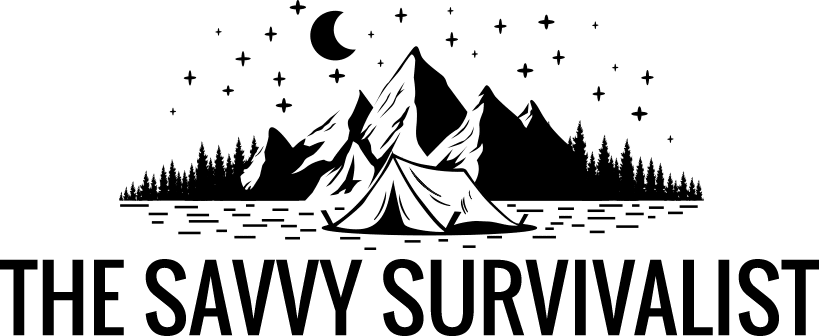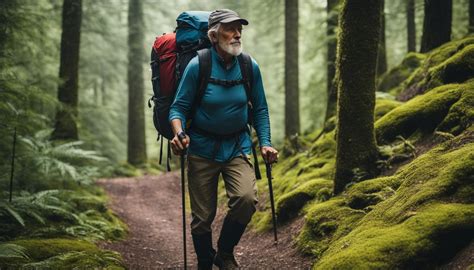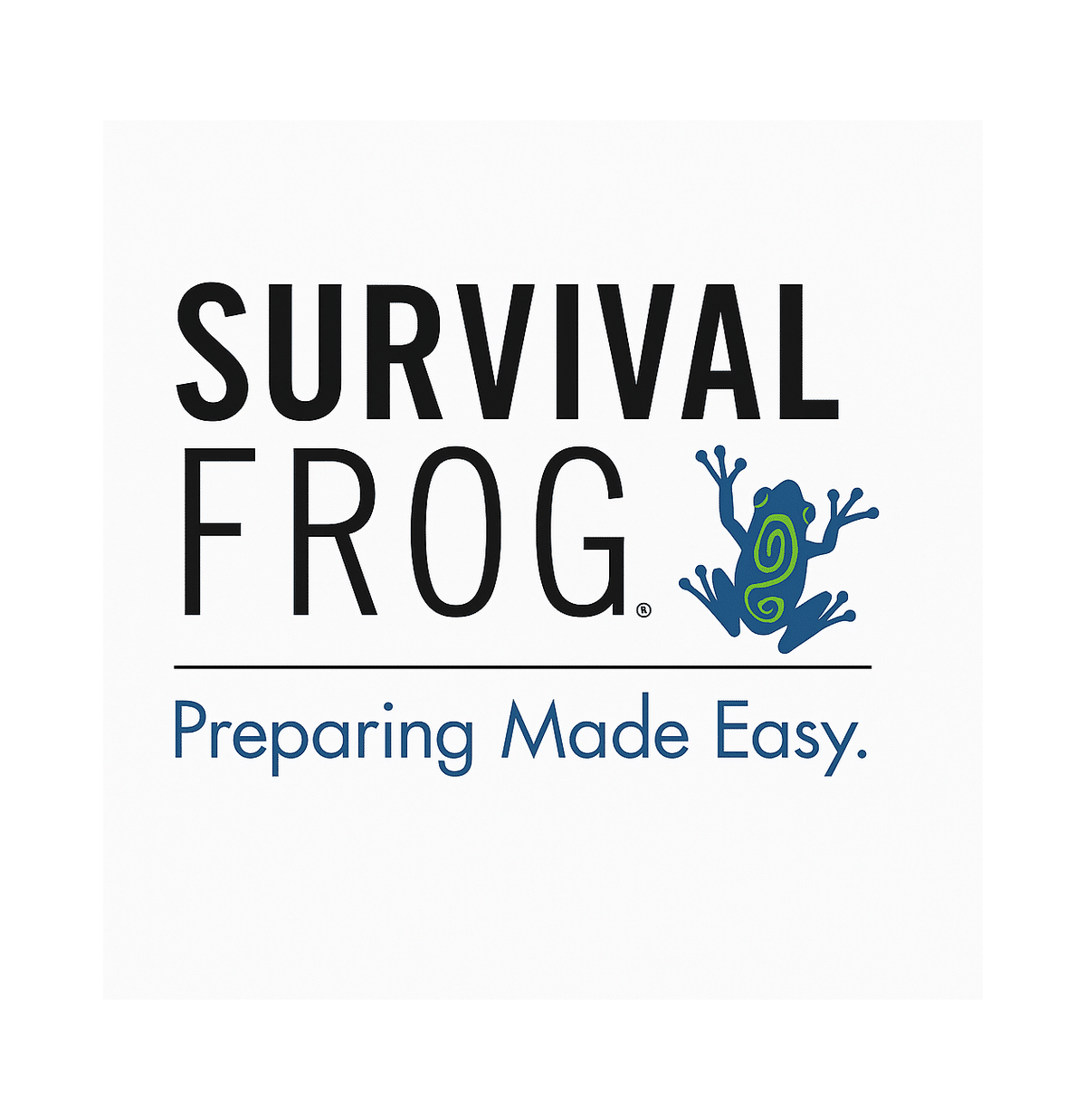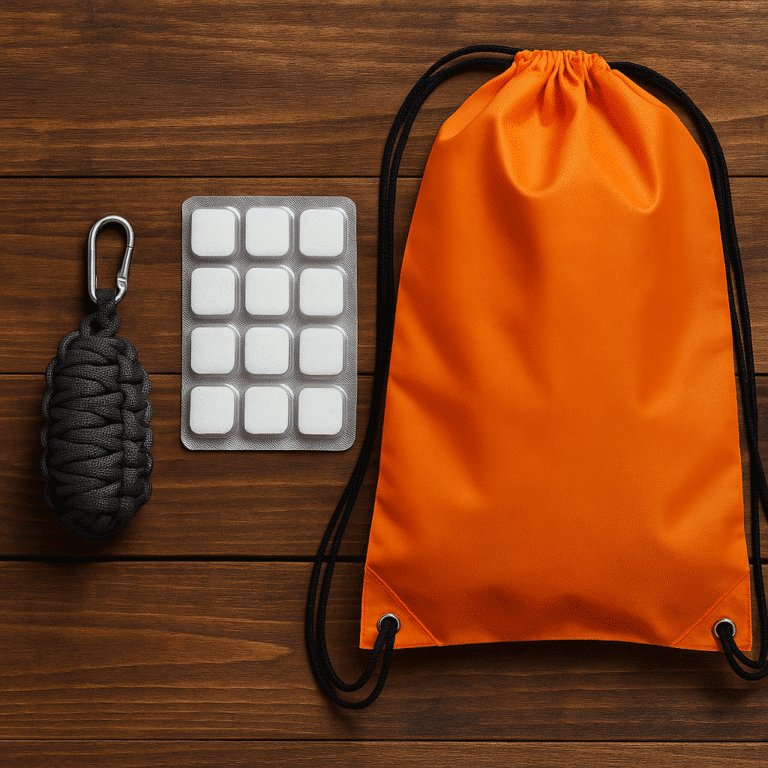🧭 Understanding the Senior Edge: Why Ultralight Is Essential
Getting older doesn’t mean giving up adventure — it just means camping smarter. For senior campers and hikers, ultralight gear isn’t about chasing trends; it’s about preserving mobility, reducing strain, and keeping the outdoors accessible year after year. Every ounce saved translates to less pressure on your joints, easier setup, and longer days exploring without fatigue.
This post contains affiliate links. I may earn a small commission at no extra cost to you. Learn more.
This guide is part of our Ultimate Camping Guide — your resource for practical systems, optimized packing, and outdoor strategies that help you camp safer and smarter at any age.
Before upgrading your gear list, review our Ultimate Camping Packing Checklist to see where you can trim unnecessary weight and make room for senior-friendly essentials that actually matter.
Below, we’ll break down why ultralight design matters most as you age — and the best senior-friendly gear to keep your adventures going strong.
📊 The Science Behind Ultralight Camping for Seniors
By the time most of us hit our sixties, tiny changes in cartilage elasticity, bone density, and muscle recovery have already begun to reshape how our bodies handle strain. Every extra pound in your pack multiplies the force on your knees and hips—research shows it’s roughly four pounds of joint pressure per pound carried¹—so trimming just ten pounds from your kit can literally save forty pounds of stress on every step. For a senior hiker navigating rocky descents or extended uphill climbs, that weight reduction isn’t a luxury; it’s a lifeline that prevents flare-ups of arthritic pain and keeps your heart rate in a sustainable zone. Beyond the mechanical benefits, carrying less weight also slows the accumulation of fatigue. A study in the Journal of Aging & Physical Activity found older adults hiking with lighter loads maintained steadier heart rates, reported less muscle soreness, and felt more mentally alert than those with heavier packs². That clarity is vital late in the day when you need to read a map accurately or make safe campsite decisions. In short, embracing ultralight gear means extending both your physical endurance and cognitive sharpness, transforming potential “off-season” aches into reasons to keep exploring year after year.
¹Takahashi et al., Journal of Orthopedic Research, 2019.
🎒 Backpacks That Carry Smarts, Not Strain
Your backpack isn’t just a bag—it’s a second skeleton that must support your spine, hips, and shoulders all at once. The moment you put on the Osprey Exos 38 (2.9 lbs), you’ll feel how its tensioned mesh backpanel floats the load away from your spine, allowing air to circulate against your back and preventing sweat-locked muscle cramps. The generous hip belt, lined with memory-foam padding, cradles your pelvis so that up to 70 percent of the weight you carry shifts off your shoulders and onto the strongest part of your torso. Side pockets sit at just the right height for hydrating on the move, and the top-lid compartment keeps snacks and essentials within reach, eliminating unnecessary pack dumps.
If you crave even fewer moving parts, the Hyperlite 2400 Southwest (2.0 lbs) leverages ultra-strong Dyneema Composite Fabric to create a semi-rigid, frameless design that still holds its shape on your back. With no jam-prone zippers or fussy internal pockets, it’s as simple as stuff, clip, and go—perfect for seniors whose fingers may stiffen in cooler temperatures. Despite its minimalism, the Hyperlite’s contoured straps and streamlined hip belt deliver surprisingly stable load carriage, and its water-resistant shell fabric means you won’t have to worry about a sudden rainstorm soaking your gear. Both packs represent a shift away from hauling and towards hiking, which is exactly what aging bodies need most.
Real-World Tip: Before your first hike, load your chosen pack with the weight you’ll carry, then wear it around your home—up and down stairs—to tweak strap tension and hip‐belt position. Walk until you feel a natural rhythm without shoulder pinching.
🏕️ Shelter That Pitches in Minutes
Nothing drains your spirits faster than wrestling with poles and rainflies as dusk closes in. Seniors need a shelter that practically sets itself up, provides reliable protection, and offers enough interior volume to treat sore joints without awkward bending. Enter the Big Agnes Copper Spur HV UL2 (2.5 lbs), whose color-coded clips and sleeves guide each pole into place so quickly you’ll barely break a sweat. Once pitched, its four-foot-plus ceiling height gives you the freedom to sit up straight, change layers, or even perform gentle stretches for a stiff back—all without smacking your head on mesh walls. The dual vents at floor and roof work in concert to whisk away condensation, ensuring that humid nights don’t become damp disasters.
For those comfortable with a bit more finesse, the Zpacks Hexamid Solo (8 oz) eliminates poles entirely by relying on your trekking sticks for support. When staked and tensioned perfectly—something you’ll want to rehearse at home—the Hexamid creates a spacious, pyramid-style shelter that packs into your hip belt pocket and weighs less than your sleeping pad. The trade-off is precision: each lineup matters, and a poorly staked corner can lead to sagging walls or water pooling. But for seniors who love the ultimate in weight savings and don’t mind the initial learning curve, the Hexamid Solo delivers freedom in the most literal sense—freedom from bulk.
Case Study: At 63, Marjorie swapped her 5 lb freestanding tent for the Copper Spur UL2. Her report? Zero morning back pain, compared to waking stiff and sore during every previous three-night trip.
🛌 Sleep Systems That Cushion Every Sore Spot
Waking up stiff and chilled can turn your second day into a slog rather than an adventure. Seniors need sleep systems that cradle pressure points, maintain consistent warmth, and prevent cold spots that trigger muscle cramps. The Therm-a-Rest NeoAir Xlite (12 oz, R-4.2) provides 2.5 inches of loft beneath your hips and shoulders—enough to keep you floating above uneven ground instead of feeling every pebble. Its high insulation rating retains heat even when temperatures dip toward 20 °F, and its pack-down size rivals that of a soda can, ensuring minimal bulk in your bag.
If you prefer the freedom to toss and turn, the Enlightened Equipment Revelation Quilt (16–20 oz for a 20 °F rating) removes the restrictive foot box of traditional mummy bags. By snapping the quilt onto a small torso pad or simply tucking it around your hips, you can stretch out naturally, sidestep night-long bunching, and eliminate those icy toes that plague many seniors. For extra cushioning on rocky sites, a thin, 3 oz closed-cell foam pad slid beneath your NeoAir transforms the hybrid setup into a rock-solid mattress—an ounce-or-two trade-off that pays dividends in morning comfort.
Troubleshooting Tip: If you still feel rocks beneath you, slide a closed-cell foam pad under the NeoAir. This hybrid setup adds just a few ounces and delivers rock-solid comfort.
👕 Layering Systems That Prevent Chill-Lock
As we age, our bodies struggle to regulate temperature shifts—one moment you’re overheating on a climb, the next you’re chilled on a breezy ridge. A strategic layering approach combats these swings and keeps muscles supple. Start with an Icebreaker Merino 150 base layer that wicks sweat, controls odor, and never freezes into a stiff shell like synthetic shirts can. When that layer cools, slip into a Patagonia Nano Puff, whose synthetic insulation traps warmth even when damp, so you never lose that hard-earned heat on drizzly mornings.
When rain or wind hits, the Outdoor Research Helium II shell stuffs to tennis-ball size, pulls on over every layer without jamming, and seals out chills instantly. On faster-changing weather days, a Montbell Tachyon wind jacket tucks into your pack pocket, ready to block sudden gusts without slowing you down. Seniors who master this four-layer dance report no more muscle locking or cramp-inducing chills—just steady warmth that lets them focus on the trail ahead instead of fighting hypothermia.
Practical Insight: Practice each layering step at home. Know exactly which zipper or pocket holds what—so in wind and rain, you move swiftly without fumbling.
🥾 Footwear That Honors Every Step
Your feet are your foundation; choosing the right shoes and support can prevent Achilles pain, plantar fasciitis, and bunion aggravation. The Altra Lone Peak 5 trail runner sports a zero-drop sole that encourages a midfoot strike, easing tension on the Achilles tendon—a common trouble spot for older hikers. Its roomy FootShape™ toe box allows toes to splay naturally, improving balance on uneven ground and reducing hotspot formation. Slip on Darn Tough Hiker Micro Crew merino socks for moisture wicking and blister resistance, and consider Superfeet Green Insoles for firm arch support that realigns your gait and absorbs road-shock.
Breaking in this system on short, flat outings before committing to rugged trails is crucial. Experiment with lacing techniques—heel-lock laces can eliminate heel slippage and ankle rubbing—and carry moleskin patches for on-trail quick fixes. Seniors who fine-tune footwear before a long trip find that proper fit and support translate directly into fewer blisters, less joint pain, and an overall more enjoyable hike.
Expert Advice: Break in shoes on flat, short walks first. Test different lacing patterns to eliminate pressure points before trusting them on rugged terrain.
🦯 Trekking Poles: Your Portable Stabilizers
Trekking poles do more than help on uphills; they become extra limbs that bear weight on descents and enhance stability on uneven terrain. The Black Diamond Distance Z poles collapse to fit inside your pack yet boast anti-shock springs that absorb impact, halving the force transmitted to knees and hips. Cork handles mold to your grip and wick moisture, sparing fatigued hands from developing hot spots or arthritis flare-ups. Adjust the poles to your height at home—and practice the left-pole/right-foot, right-pole/left-foot rhythm on flat ground—so that you’ll naturally maintain balance and conserve energy when traversing rocks or roots.
Alongside stability, poles double as improvised stretch bars: at midday breaks, you can slide your foot into the strap and gently pull to stretch your hamstrings or calves. For seniors prone to joint stiffness, this two-in-one functionality turns a simple hiking accessory into a valuable therapeutic tool.
Field Drill: Practice the left-pole/right-foot rhythm on level ground until it becomes second nature. This diagonal pacing reduces lateral sway and conserves energy.
🗺️ Navigation & Peace of Mind
Uncertainty on the trail can sap both confidence and energy—especially for seniors who need clear, reliable information. A Suunto MC-2 compass with adjustable declination works flawlessly inside gloves, guiding you whether you’re crossing open meadows or dense forests. Complement it with the Black Diamond Spot 350 headlamp: its glove-friendly controls let you switch from bright white to red-light mode in an instant, preserving night vision if you need to reference your map at dusk or stumble out of your tent for a midnight comfort break.
For the ultimate safety blanket, the ACR ResQLink Personal Locator Beacon (under seven ounces) sends an SOS signal to rescue satellites at the push of a button—no cell service required. Register your device before hitting the trail and share your trip plan with a trusted contact. Knowing you have a guaranteed way to call for help lets you relax into the rhythm of the hike rather than worrying about what-ifs.
💧 Hydration & Nutrition: Fueling Senior Bodies
Proper hydration and nutrition fuel every step and speed recovery when metabolism slows with age. The Katadyn BeFree 1.0 L filter straw lets you sip directly from mountain streams without lugging a bulky pump, making it easy to hit the 75 oz-per-day hydration goal many experts recommend for older adults³. Because seniors often underestimate thirst, set a timer or habit-stack drinking into your routine—one sip every few minutes can prevent dehydration headaches and muscle cramps.
When it’s time to eat, the Jetboil MicroMoil boils water in under three minutes with push-button ignition, so you don’t waste dexterity wrestling with a flint lighter. Mountain House meals in single-serve pouches deliver balanced proteins, fats, and carbs in flavors gentle on aging stomachs—no heavy, greasy stews that can trigger digestive distress. Couple trail mix of nuts, dried fruit, and nut-butter packets for quick-energy snacks that taste good even on the uphill grind. By planning nutrient-dense, easily digestible meals, seniors can maintain steady energy and avoid the bonking that turns a once-loved hike into an arduous chore.
Physiological Note: Heavy, greasy meals can upset aged digestion; stick to mild flavors and balanced nutrients to avoid stomach woes on the trail.
³National Academies of Sciences, Engineering, and Medicine. Dietary Reference Intakes for Water, Potassium, Sodium, Chloride, and Sulfate, 2004.
📱 Communication Devices: Staying Connected
When you venture beyond cell towers, a lightweight satellite communicator becomes your lifeline. The Garmin inReach Mini (3.5 oz) combines two-way SOS messaging, location sharing, and basic navigation in a device smaller than a deck of cards. Seniors appreciate its bright, high-contrast screen and tactile buttons—no squinting at tiny icons or fumbling with touch screens in cold weather. Predefine emergency contacts and message templates at home, then use the “OK” button in the field to send a quick status update or call for help.
If you prefer lower-tech backup, attach an emergency whistle to your hydration tube or jacket zipper. A sharp, periodic blast can alert nearby hikers without draining any batteries, and that audible reassurance can be just as powerful as a digital ping when you feel isolated.
🕶️ Vision & Hearing Protection
Protecting your senses—already undergoing age-related changes—is crucial for both safety and comfort on the trail. Slip on Goodr OG Running Sunglasses (under an ounce) to block 100 percent of UV rays and reduce glare off snow or water. Their snug, no-slip fit means you won’t waste energy pushing them back up your nose. At camp, block out tent-flapping or wind noise with Campstone outdoor earplugs, which muffle disruptive sounds while still letting you hear nearby raindrops or late-night wildlife, helping you wake refreshed instead of bleary-eyed.
🪑 Camp Furniture & Comfort Items
After a long day’s hike, sitting on a damp log can aggravate sore hips or a stiff lower back. The Helinox Chair Zero (18 oz) packs down to the size of a large water bottle yet supports up to 265 lbs, offering seniors a stable, off-ground seat that relieves pressure and lets you relax comfortably. Pair it with a small inflatable pillow or a stuff sack filled with spare clothes—never underestimate the power of a good neck rest after a windy, chilly night.
🏋️ Pre-Trip Conditioning and Practice
Your body and your kit both need a shakedown.
Incorporate low-impact cardio—swimming or cycling—and balance drills like one-leg stands to build endurance and prevent falls. Pack your full kit and do an over-nighter in your backyard, timing yourself on shelter pitches, stove setups, and sleep comfort. Conquer any fumbling at home so you move confidently miles from help.
🚶 On-Trail Strategies for Sustained Comfort
Efficient pacing and routines keep energy in reserve.
Use the “talk test”: if you can’t hold a sentence, slow your pace. Stop every 30–45 minutes for a 3-minute stretch, a sip of water, and a small snack. Every hour, reset posture: stand tall, roll shoulders back, and realign your hip belt to minimize slouching. These micro-breaks stave off fatigue and joint stiffness.
🗓️ Sample 3-Day Senior Backpacking Itinerary
A well-paced itinerary prevents overexertion and maximizes enjoyment for aging bodies. On Day 1, cover moderate terrain—about seven miles—with hourly breaks for hydration, stretching, and snacking. Arriving at camp before late afternoon gives you time to set up your Copper Spur HV UL2, practice map review with your Suunto MC-2, and perform gentle joint mobility exercises without rushing.
On Day 2, explore side trails of three to five miles with minimal elevation change. Use this lower-intensity day to hone compass bearings or test your Garmin inReach Mini messaging in a low-stress environment, then return to basecamp by mid-afternoon. This built-in rest day lets you manage fatigue and weather swings.
On Day 3, pack out early with a relaxed morning walk, perhaps birdwatching near a water source. Cover six to eight miles at a steady pace, focusing on drawing deep breaths and savoring landmarks rather than chasing mileage goals. Always have a contingency plan for shorter days if storms roll in, and identify nearby shelters or ranger stations before you set out.
🎒 Packing-List Narrative
Rather than tossing items into your bag blind, visualize how each day unfolds. In the morning, reach into your top-lid pocket for your Patagonia Nano Puff and Helium II shell as breakfast water boils. At midday, refill your BeFree filter and swap snacks from your hip-belt pocket without stopping. By evening, unclip your Helinox Chair Zero first to rest while you pitch your Copper Spur, then recline with your Revelation Quilt as the sun sets. This narrative mapping keeps your most-used items exactly where you need them, conserving precious time and energy.
❓ Senior-Focused FAQ
Q: What if I can’t lift my pack onto a picnic table?
A: Slide it onto a bench or low rock, then step up to secure shoulder straps and hip belt. Practicing at home on stable furniture builds confidence and ensures you’re never stranded in a tough spot.
Q: How do I handle nighttime bathroom breaks?
A: Clip your headlamp to your chest strap for instant hands-free illumination and lean your trekking poles against the vestibule flap as tactile guideposts back to your tent.
Q: My hands get cold—any tips?
A: Wear lightweight liner gloves under waterproof mitts, or slip a small chemical hand-warmer packet inside each glove for consistent warmth.
Q: What if I experience altitude sickness?
A: Acclimate with shorter day hikes, stay hydrated with electrolyte packets, and ascend no more than 1,000 ft per day above 8,000 ft. If symptoms persist, descend immediately and rest.
💰 Budgeting Advice
Ultralight gear often carries a premium, but strategic buying can ease the financial load. Start with foundational items—backpack and shelter—then upgrade your sleep system, footwear, and accessories as needed. Hunt for off-season sales in late fall and early spring, and consider renting or buying used for expensive items you’ll only use occasionally. When you choose quality with strong warranties—like Osprey’s All Mighty Guarantee—you often save money over time by avoiding replacement costs.
💆 Post-Trip Recovery & Care
After each trip, give your body and gear the TLC they deserve. Soak your feet in warm water with Epsom salt to reduce inflammation, then roll out calves and hamstrings with a foam roller to prevent delayed-onset muscle soreness. Rehydrate with a balanced snack of protein and antioxidants within two hours of return to speed tissue repair. Air out sleeping pads and quilts to prevent mold growth, and inspect zippers, seams, and pole ferrules for signs of wear—addressing minor repairs immediately keeps your gear reliable for the next adventure.
By weaving together physiology-driven insights, narrative planning tips, and carefully chosen ultralight equipment, seniors over 60 can pursue backpacking with confidence, comfort, and joy. Practice with your kit, refine your routines, and remember: age is just a number when your gear is designed to work with you. Happy hiking!
Before wrapping up, explore our Ultimate Camping Guide for more smart camping systems, gear tips, and routines that make every adventure easier on your body.
🌟 Conclusion
Ultralight camping isn’t about giving things up — it’s about gaining freedom. With the right lightweight gear, smart recovery habits, and a bit of practice, seniors can move farther, rest easier, and enjoy the outdoors without the strain. Every ounce you drop from your pack adds energy back to your adventure.
Smart systems, light gear, and a steady mindset keep you on the trail for years to come — because the outdoors doesn’t have an age limit.
Further Reading:
🏕️ The Ultimate Camping Guide
🧳 What to Pack for Camping
🧰 How to Organize Camping Gear
👨👩👧 Family-Friendly Camping Checklist
🐾 Camping with Pets in the Summer
🌲 11 Hammock Camping Tips
⚙️ High-Performance Camping Gear
🎒 Best Survival Kits for Beginners
🧼 DIY Off-Grid Shower Setups







